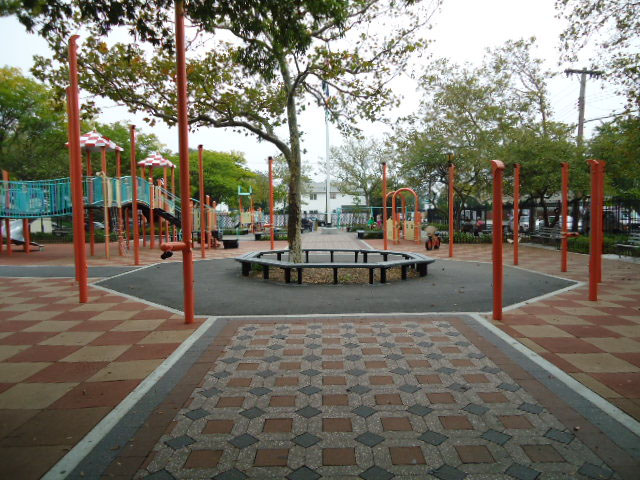-
This playground is named for Willets Point, a peninsula located to the northeast of the park. Due to its strategic position at the approaches to the East River via the Hell Gate, the point eventually became the site of Fort Totten. In the 18th century, the 150 acre peninsula was known as Thorne’s Neck, after its owner, Jacob Thorne. In Read more...
-
This triangle, located in the Queens neighborhood of Maspeth in the shadow of the Long Island Expressway, is named in honor of American naval hero, Captain Oliver Hazard Perry (1785-1819). In the famous Battle of Lake Erie, Oliver Hazard Perry became the first man in history to defeat an entire British naval squadron and triumphantly bring home every ship as Read more...
-
Derived from the Native American word for “The Place of Happy Hearts,” Wayanda references this site’s historic use as a burial ground. This park is one of many throughout the city that once served as potters’ fields. Washington Square Park, Union Square, and J.J. Walker Park all served as cemeteries for paupers, drifters, criminals, and others who were refused burial Read more...
-
Willow Lake Playground draws its name from nearby Willow Lake in Flushing Meadows-Corona Park. Willow Lake, like adjacent Meadow Lake, was created by Parks Commissioner Robert Moses (1888-1981) for the 1939-40 World’s Fair. Willow Lake’s surface area originally measured 47 acres, but after the 1964 World’s Fair the lake began to revert to the wetland from which it had been Read more...
-
Sources conflict over the true meaning of the name Hell Gate. The Dutch rendering, Hellgat, is translated as “open passage,” and in this context refers to the East River as it opens into the Long Island Sound. Formed by a fault deep under the surface, the water, at over 100 feet in depth on the Manhattan side, is among the Read more...
-
This recreational area serves both the students of P.S. 104 and the surrounding community of Far Rockaway. The playground, originally named P.S. 104 Playground, was named for neighboring Westbourne Avenue in 1985. The Canarsie (also “Canarsee”) Indians, who originally inhabited the Rockaway area, sold what was mostly barren land to English Captain John Palmer in 1685. The sale was memorialized Read more...
-
Walter Ward (1911-1994) was a member of the New York City Council for a quarter of a century, serving 13 terms from 1968 until 1993. Ward, who took courses at the Dale Carnegie Institute, was the owner of the Ward Advertising Company, which specialized in outdoor signs. Ward sold the business in 1971 to devote himself solely to representing the Read more...
-
Kissena Corridor Park consists of two separate corridors that link together much of the parkland in eastern Queens. The western corridor ties Flushing Meadows-Corona Park to Kissena Park, and the eastern corridor continues to connect Cunningham Park on the other side. Although it is composed of two different parts, it is considered a whole, as its sections form a continuous Read more...
-
Both this playground and the nearby street are named in honor of Corporal William F. Kennedy (1893-1918), an army mechanic killed in action during World War I (1914-1918). Kennedy was born and raised in Bayside, where his father was a police officer. After the war broke out, he joined the army, and began training at Fort Upton, the present site Read more...
-
This playground takes its name from the adjacent Grassmere Terrace housing complex. Playgrounds have a long and storied history in New York City. From 1865 to 1895, New York City’s population more than doubled. As thousands of new immigrants moved into already overcrowded tenement districts, the streets teemed with children, many of whom worked long hours in factories. With the Read more...










